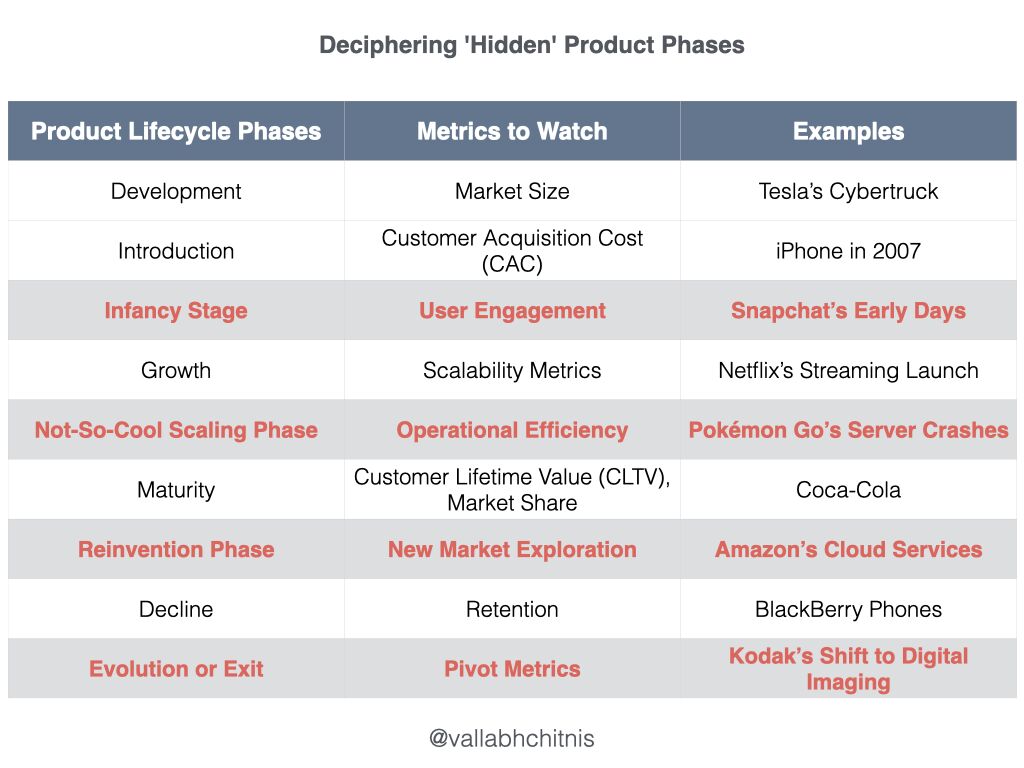We are all familiar with the basic stages of the Product Life Cycle, from Development to Exit. Let us also take a look at some often-overlooked phases as well.
-Infancy Stage
According to CB Insights, 42% of startups fail because there is no market need.
The key to surviving this stage is closely listening to your early adopters and iterating based on feedback.
Example: Snapchat began as a class project. It faced critical user feedback. It successfully navigated this tricky phase by continuously iterating its UI based on user inputs.
-‘Not-So-Cool’ Scaling Phase
McKinsey reports that only 8% of companies believe their current business model is economically sustainable.
Prioritize operational efficiency and scalability to sustain growth.
Example: Pokémon Go faced server crashes due to rapid scaling. By investing in robust server infrastructure, they overcame this hurdle.
-Reinvention Phase
A Harvard Business Review study states only 13% of companies successfully innovate in mature markets.
Exploration and diversification into new markets or products can breathe new life into mature companies.
Example: Amazon chose to diversify into cloud computing even though it is a giant in e-commerce. That is a classic example of business diversification.
-Evolution or Exit
The U.S. Bureau of Labor Statistics shows that only about 35% of businesses survive past their 10th year.
Decide whether to evolve into new areas or strategically exit the market.
Example: Kodak was on the brink due to the declining market for film cameras. It made the pivotal decision to pivot to digital imaging, avoiding the fate that consumes many declining businesses.
Understanding these less-talked-about phases equips us better for the rollercoaster ride of product management.
Have you encountered these stages? Do share your insights.
